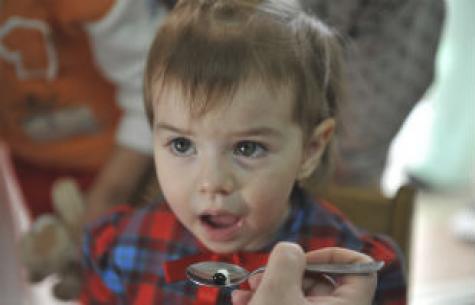To many people in Australia, World TB Day probably doesn’t mean much.
Many of us would think that tuberculosis (TB) is a disease of the past and has little relevance to us. After all, the oldest known example of TB dates from 3,500 BC in an Egyptian mummy.
Yet the World Health Organisation (WHO) has identified TB as a global emergency. One in three people in the world – approximately 2 billion - are infected with the TB bacteria and around 10% of these will become very ill with it, which is roughly equivalent to the population of Australia.
TB is an infectious bacterial disease that most commonly affects the lungs, although it can also affect other parts of the body. It is easily spread through the air from person-to-person. In healthy people, it often causes no symptoms since their immune system acts to stop the bacteria naturally. Active TB can be treated with a six month course of antibiotics. But in people who are not so healthy to begin with, or whose immune system is not as developed, it can cause serious and prolonged illness and death.
WHO data shows that every 20 seconds someone somewhere in the world dies of TB. It is one of the three leading causes of death of women aged 15-44 years worldwide, and 200 children die from it every day. In 2010, 10 million children lost at least one parent to the disease; and TB is also responsible for one in four AIDS deaths.
For many of the world’s children, TB can often go undiagnosed because they lack access to basic health services or because the health workers are often not able to recognise the signs and symptoms of TB which is difficult to diagnose in children. Most families who are vulnerable to TB live in poverty and know little about the disease. They do not have access to the sophisticated childhood molecular tests to detect TB, such as we do in Australia, and diagnosis is based on the same methodology introduced 130 years ago.
According to the Director of WHO’s ‘Stop TB’ department, Dr Mario Raviglione, death rates from TB are down 40% overall compared to 1990.
“But unfortunately, to a large extent, children have been left behind and childhood TB remains a hidden epidemic in most countries. It is time to act and address it everywhere.”
Dr Raviglione says it costs less than 3 cents a day to provide therapy that will prevent children from becoming ill with TB and 50 cents a day to provide treatment that will cure the disease. He says children with TB usually respond well to treatment – but first their illness has to be detected.
“Before we can give prevention or treatment, we have to find the children at risk and this will only happen if governments, civil society and the private sector work together. It is unconscionable to let a single child die of TB.”
Another issue to address is increasing levels of resistance to treatment. The resistance is largely due to the fact that the drugs used to treat TB have not changed in 50 years and new strains of the disease have developed. Similarly, the current vaccine is more than 90 years old and its once-prophylactic effects are becoming ineffective particularly for adults.
The Centenary Institute of Medical Research at the University of Sydney is one of only three Australian members of a worldwide ‘Stop TB’ partnership involving non-government organisations, research facilities and private sector companies whose aim is to have zero child deaths from TB by 2020. Centenary Institute’s work is focussed on developing new vaccines and drugs as well as how the immune system fights TB.
“Centenary Institute researchers play a large part in the global ‘Stop TB’ initiative to reduce the incidence and impact of the disease and to eventually eradicate this global killer through their research,” says Professor Mathew Vadas, Executive Director of the Institute.
Professor Vadas added that while TB is largely a disease of the developing world, there were 1000 Australians diagnosed with the disease in 2009. Local health experts anticipate this may increase as more Australians travel and work overseas.
Further information
For further information or to make a donation to the ‘Stop TB’ partnership or Centenary Institute, visit:















__small.png)










